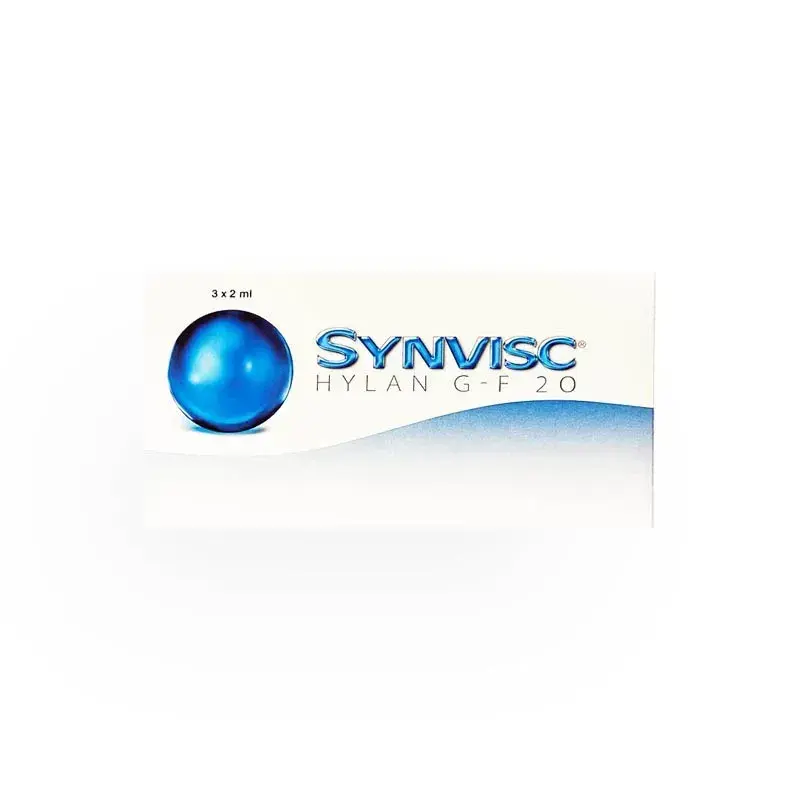Osteoarthritis affects millions worldwide, with over 528 million people living with the condition as of 2019. Among the different types of osteoarthritis, experts have found that knee osteoarthritis is one of the most challenging forms to manage. Effective treatment options are crucial for alleviating symptoms and improving the quality of life for those affected by this condition.
Two popular treatments for osteoarthritis are Monovisc and Synvisc. These injections enhance joint lubrication, reduce pain, and improve function. Both products are popular for their effectiveness in treating OA but have distinct formulations and applications worth comparing.
In this article, we will compare Monovisc vs Synvisc, exploring their mechanisms, benefits, and patient experiences to help you determine which treatment might be best for you.
Key Takeaways
- Osteoarthritis (OA) is a degenerative joint disease that affects millions worldwide. It often causes pain, stiffness, and reduced mobility. Effective treatment can significantly improve the quality of life.
- Monovisc is a single-injection viscosupplement made from hyaluronic acid derived from bacterial fermentation. It is primarily used for knee osteoarthritis and provides convenient, immediate relief for those looking to avoid multiple treatments.
- Synvisc contains Hylan G-F 20, derived from rooster combs. It requires a three-injection regimen and is used for multiple joints, such as the knees, hips, and shoulders. It offers long-lasting pain relief.
- Choosing between Monovisc vs Synvisc should depend on personal preferences, health history, and treatment goals.
About: Medical Spa RX provides medical practices with premium products at the best prices. If you’re looking to order Monovisc online for your practice, the sales representatives at Medical Spa RX can give you guidance.
Understanding Osteoarthritis (OA) and Viscosupplements
Osteoarthritis (OA) is a degenerative joint condition that occurs when the cartilage that cushions the ends of bones wears down over time. This can lead to pain, stiffness, and swelling in the affected joints, making movement difficult. OA most commonly affects joints like the knees, hips, and hands, significantly impacting mobility and quality of life.
Viscosupplements are injectable treatments designed to help manage osteoarthritis symptoms. They contain hyaluronic acid, a substance naturally found in joint fluid that acts as a lubricant and shock absorber. By injecting this compound directly into the affected joints, viscosupplements can relieve pain, improve mobility, and enhance joint comfort, allowing for more fluid and less painful movement.
Monovisc
Monovisc is composed of hyaluronic acid, a naturally occurring substance that provides lubrication and cushioning in healthy joints. The hyaluronic acid in Monovisc comes from bacterial fermentation, making it different from other treatments that may use animal-derived sources. This ensures that the product is biocompatible and suitable for many patients.
Monovisc is administered as a clear gel that closely mimics the natural synovial fluid found in healthy knee joints. By injecting this gel directly into the knee, Monovisc injections help restore lubrication and reduce friction, resulting in smoother movement and less pain for osteoarthritis sufferers.
Monovisc injections for knees are highly recommended for those looking to alleviate knee pain and improve joint function without surgery.
Synvisc
Synvisc is made from Hylan G-F 20, a substance derived from rooster combs, which contains hyaluronic acid similar to the fluid found in healthy joints. This composition makes Synvisc effective in mimicking and supplementing the synovial fluid, which helps joints move smoothly and without pain.
Synvisc is typically used to treat osteoarthritis in various joints, including the knees, shoulders, hips, and ankles. It injects this gel-like fluid into the affected joint to restore lost lubrication and cushioning, reducing friction and pain.
Effectiveness of Monovisc and Synvisc
Clinical studies have demonstrated the effectiveness of both Monovisc and Synvisc in treating osteoarthritis. A pivotal phase III clinical trial involving 369 patients across 31 centers in the U.S. and Canada confirmed Monovisc’s safety and efficacy. Similarly, Synvisc, which requires three injections over several weeks, has been found to offer long-lasting pain relief and improved joint mobility in patients with knee osteoarthritis.
Both treatments have shown positive results when comparing patient outcomes, but there are some differences. Monovisc’s single-injection approach offers quicker improvement for some patients, making it a convenient option. On the other hand, Synvisc’s three-injection regimen provides a more gradual improvement but can offer longer-lasting relief.
Patient Experiences with Monovisc and Synvisc
Many people with knee osteoarthritis have tried Monovisc or Synvisc and share their stories online. Some say their knee pain got much better after treatment, while others talk about side effects like swelling or discomfort at the injection site.
- “I had my first Monovisc injection in September 2019; my second was due in March 2020, but then COVID hit. Finally, I was able to have the second injection in May 2020. These injections have been great for both knees. I am bone on bone in my right knee. I went to two different Orthopedic Surgeons before having the injections. Both recommended getting them, and I am so happy I did. No pain, no issues with the injections, and they help! I will continue with the Monovisc injections until I can’t have them or they don’t work. Both surgeons said I can continue these until they don’t work; some patients continue and never need knee replacement. Wouldn’t that be great? It’s a big yes vote from me.”
- “I have mild to moderate osteoarthritis in my right knee from an ACL reconstruction in 2000 and meniscectomy in 2016 to clean up meniscal tears. I have been using Synvisc-One for over two years, and it has been very effective. It takes me from having a stiff, painful knee to a nearly fully functional joint on which I can train and do fairly high-impact sports. It takes a week or two to kick in after an injection. The knee feels stiff and achy at first, but it eases up, and within a month, you forget you ever had OA. You add 6 ml to the 6 ml already in your knee joint capsule with the single injection. No wonder it feels full at first. Rest and give it a week or so to blend in. I am 56 and surf nearly every day. Synvisc-One is the miracle solution that keeps my knee pain-free and functional. I highly recommend it.”
Common Side Effects And Complications
Monovisc and Synvisc help people with knee osteoarthritis. They can cause side effects and complications. Here’s what to know:
- Pain at the injection site happens often. People might feel sore where they got the shot.
- Swelling in the knee could occur, making it hard to move for a few days.
- Bruising around where the needle went in is common. It should fade after a week.
- Some patients report feeling warmth or heat in the knee.
- Rash and itching can happen near the injection spot but usually go away independently.
Remember that Monovisc requires just one shot while Synvisc needs three, which could affect how often these side effects occur for each treatment.
Making Informed Decisions
Choosing between Monovisc and Synvisc needs careful thought. Here are some things to keep in mind.
- Origin of Ingredients: Monovisc is derived from bacterial fermentation, whereas Synvisc comes from rooster combs. Patients with allergies to animal products may prefer Monovisc.
- Number of Injections: Monovisc is a single-injection treatment, while Synvisc typically requires three injections over three weeks.
- Duration of Pain Relief: Both treatments provide pain relief, but individual responses and the duration of effectiveness can vary. Discussing these factors with a healthcare provider can help in deciding.
- Side Effects and Allergies: Evaluate any history of allergies to components used in the formulations. Discuss possible side effects, such as swelling or local discomfort.
Consulting a healthcare provider is crucial when deciding between Monovisc and Synvisc. Each patient’s condition is unique, and a professional can provide guidance based on individual health factors, allergy risks, and lifestyle needs.
A thorough consultation will also help patients understand the differences in how these injections are administered, their expected outcomes, and which one is better suited for their specific symptoms and treatment goals.
Conclusion
Choosing between Monovisc vs Synvisc ultimately depends on an individual’s needs and preferences. Monovisc is ideal for those seeking a single-injection solution that effectively targets knee osteoarthritis. On the other hand, Synvisc can provide pain relief for multiple joints, such as the hips and shoulders, but it requires a series of three injections for optimal results.
Both treatments effectively reduce osteoarthritis pain and improve joint function. It is important to consult with a healthcare provider to determine which option best aligns with your condition, health history, and treatment goals, ensuring the best possible outcome.
FAQs
1. What are Monovisc and Synvisc used for?
Monovisc and Synvisc are viscosupplements used to treat osteoarthritis. They provide lubrication and cushioning to affected joints, aiming to reduce pain, improve movement, and enhance joint comfort.
2. Which joints can be treated with Synvisc and Monovisc?
Monovisc is primarily used for knee osteoarthritis, whereas Synvisc can be used for multiple joints, including the knees, hips, shoulders, and ankles.
3. How long do the effects of Monovisc and Synvisc last?
Monovisc generally provides relief for up to six months, while Synvisc’s effects can vary depending on individual responses. Some patients experience relief for several months after the treatment course.
References
World Health Organization. Osteoarthritis. Published July 14, 2023. https://www.who.int/news-room/fact-sheets/detail/osteoarthritis
Peck, J., Slovek, A., Miro, P., Vij, N., Traube, B., Lee, C., Berger, A. A., Kassem, H., Kaye, A. D., Sherman, W. F., & Abd-Elsayed, A. (2021). A Comprehensive Review of Viscosupplementation in Osteoarthritis of the Knee. Orthopedic reviews, 13(2), 25549. https://doi.org/10.52965/001c.25549
Medical Advisory Secretariat (2005). Intra-articular viscosupplementation with hylan g-f 20 to treat osteoarthritis of the knee: an evidence-based analysis. Ontario health technology assessment series, 5(10), 1–66.






















